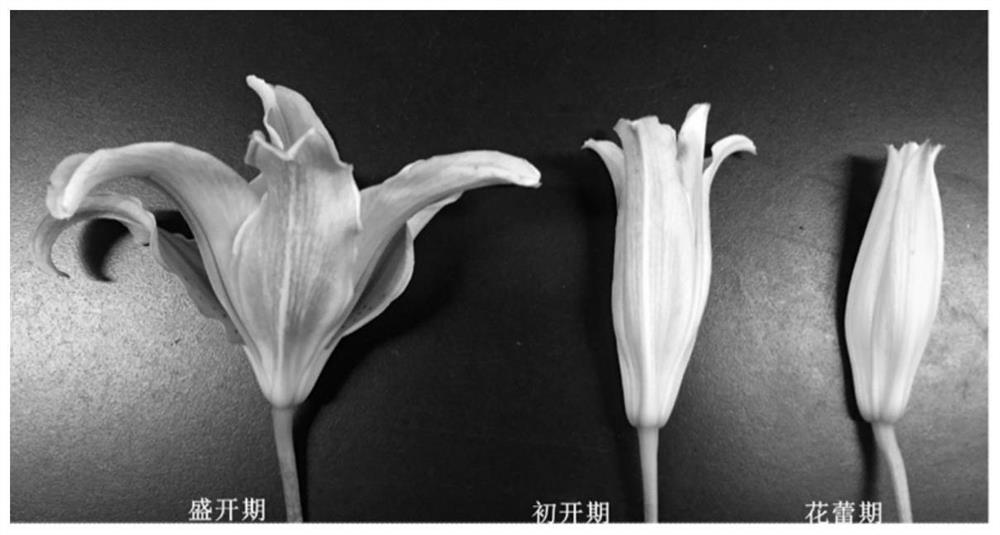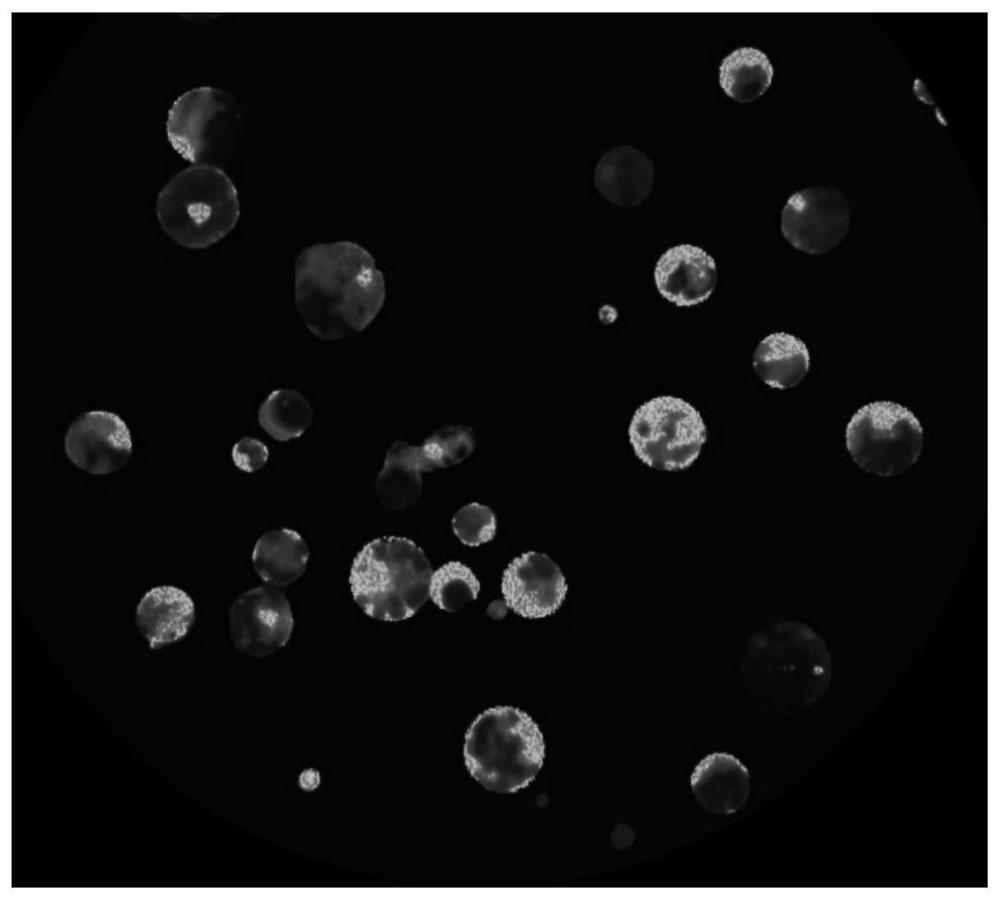Preparation method of lily petal protoplast
A protoplast and lily technology is applied in the field of preparation of lily petal protoplasts to achieve the effect of overcoming low separation efficiency
- Summary
- Abstract
- Description
- Claims
- Application Information
AI Technical Summary
Problems solved by technology
Method used
Image
Examples
Embodiment 1 100
[0039] The preparation method of embodiment 1 lily petal protoplast
[0040] The present embodiment provides the method for lily petal protoplast isolation and purification, described method comprises the following steps:
[0041] 1. Dark pretreatment: Select the flower buds (not open) of Oriental lily 'Sorbonne' in good condition and free from diseases and insect pests, cut them off and put them in vases, and carry out dark treatment at room temperature. In the present embodiment, the dark treatment time is 72h.
[0042] 2, material processing: with step 1 gained first open inner round perianth piece (being inner round petal, see figure 1 ) soaked in soapy water, rinsed with running water, soaked in 75% alcohol for 5 minutes, rinsed with sterile water, blotted dry, and set aside.
[0043]3. Enzymatic hydrolysis treatment: Cut the material obtained in step 2 into strips with a width of 2 mm with a sterilized blade, weigh 1 g of strips, and put them into 10 ml of enzymatic hy...
Embodiment 2
[0050] The influence of embodiment 2 dark treatment on lily petal protoplast preparation
[0051] For the dark treatment time in the method of Example 1, the present invention sets 5 time gradients: 0, 24, 36, 48, 72h. The material after dark treatment was subjected to enzymatic hydrolysis and purification according to the method in Example 1. The results showed that the petals should be darkened for 72 hours (Table 1).
[0052] Table 1 Yield and vigor of lily protoplasts after dark treatment
[0053]
[0054]
[0055] Note: The same lowercase letters are not included, indicating that the difference is significant at the P<0.05 level.
[0056] As shown in Table 1, dark treatment has a very significant impact on the yield of petal protoplasts of lily, and as the treatment time prolongs, the yield of protoplasts increases significantly ( Figure 4 ), the protoplast production of petals reached the maximum after 72 hours of treatment 4.82×10 5 individual / g, at this time...
Embodiment 3
[0057] Example 3 Effects of Enzyme Concentration Ratio, Enzymolysis Time and Material Collection Period on Lily Petal Protoplast Preparation
[0058] For the material collection period, enzyme concentration ratio and enzymolysis time in steps 2 and 4, the present invention sets 4 factors and 3 levels of L 9 (3 4 ) Orthogonal test (Table 2). The cellulase concentration level is 1%, 1.5%, 2%; the isolated enzyme concentration is set to 0.2%, 0.5%, 1%; the petal enzymatic hydrolysis time gradient is 8h, 10h, 12h; Petals in bloom and full bloom ( figure 1 ). Enzymolysis was carried out according to the test conditions of each group, and the yield and activity of protoplasts were counted.
[0059] From the R values in Table 2, we can see that the order of the influence of four factors on the yield of petal protoplasts is: cellulase concentration>time of sampling>enzymolysis time>concentration of isolated enzyme. Among them, the concentration of cellulase has a very significa...
PUM
 Login to View More
Login to View More Abstract
Description
Claims
Application Information
 Login to View More
Login to View More - R&D
- Intellectual Property
- Life Sciences
- Materials
- Tech Scout
- Unparalleled Data Quality
- Higher Quality Content
- 60% Fewer Hallucinations
Browse by: Latest US Patents, China's latest patents, Technical Efficacy Thesaurus, Application Domain, Technology Topic, Popular Technical Reports.
© 2025 PatSnap. All rights reserved.Legal|Privacy policy|Modern Slavery Act Transparency Statement|Sitemap|About US| Contact US: help@patsnap.com



